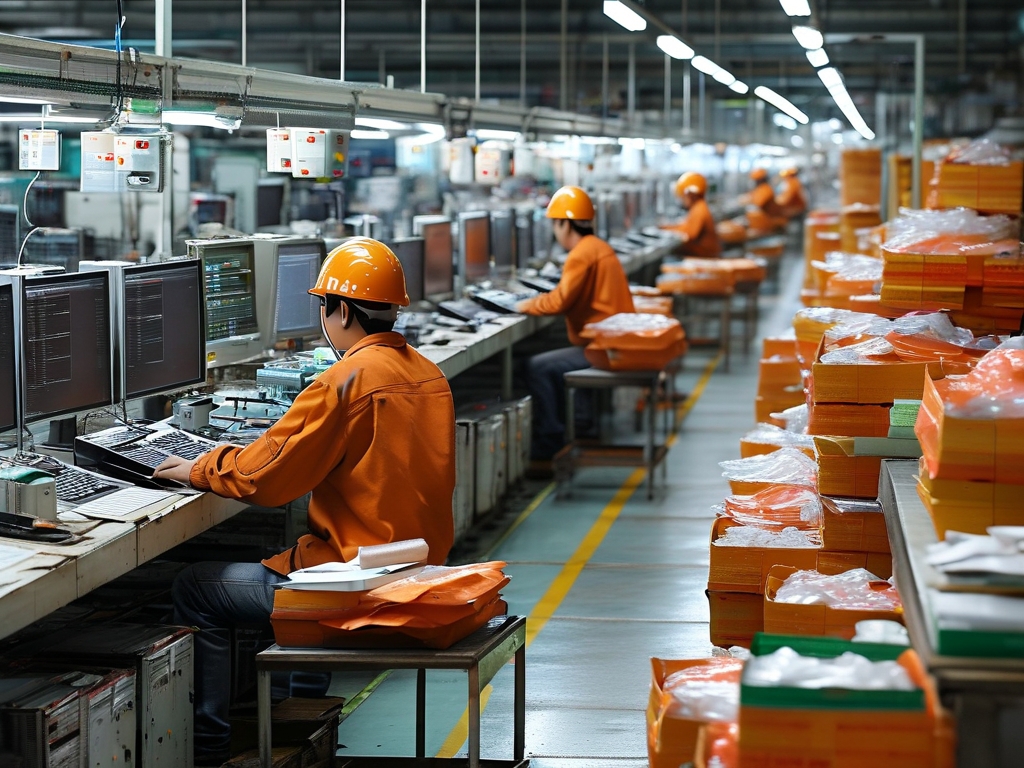The role of a backend engineer in an electronics factory is often shrouded in mystery, especially for those outside the manufacturing or tech industries. Questions about job intensity, salary ranges, and career sustainability are common. This article explores the realities of working as a backend engineer in electronics manufacturing, addressing workload challenges, compensation trends, and industry-specific demands.

What Does a Backend Engineer Do in an Electronics Factory?
Unlike software-focused backend engineers who manage servers and APIs, backend engineers in electronics factories handle industrial automation systems, machine-to-machine communication protocols, and data pipelines for production lines. Their work ensures seamless coordination between machinery, quality control systems, and enterprise resource planning (ERP) software. Key responsibilities include:
- Developing and maintaining firmware for manufacturing equipment.
- Optimizing data flow between sensors, robots, and centralized databases.
- Troubleshooting hardware-software integration issues.
- Implementing cybersecurity measures for industrial IoT devices.
This role requires expertise in programming languages like C++, Python, and Ladder Logic, as well as familiarity with industrial standards like OPC UA and Modbus.
Workload and Stress Factors
The job’s intensity varies depending on factory size, production targets, and technological maturity. Below are common stressors:
-
High-Pressure Deadlines
Electronics factories often operate on tight schedules to meet global supply chain demands. Backend engineers may face urgent requests to resolve downtime issues or adapt systems for new product launches. For example, during a smartphone model transition, engineers might work 12-hour shifts to recalibrate assembly line robots. -
On-Call Responsibilities
Production lines run 24/7 in many factories, requiring engineers to be available for emergencies. A single malfunctioning sensor could halt an entire line, costing thousands of dollars per minute. -
Physical and Mental Fatigue
Unlike office-based tech jobs, backend engineers in factories often split time between desk work and factory floors. Exposure to noise, machinery, and strict safety protocols adds physical strain. -
Skill Gap Challenges
Legacy systems are common in older factories, forcing engineers to maintain outdated codebases while implementing modern solutions. Bridging this gap demands continuous learning.
Salary Ranges: What to Expect
Salaries for backend engineers in electronics factories depend on location, experience, and factory scale. Below is a breakdown:
Entry-Level (0–3 Years Experience)
- Asia: $15,000–$30,000 annually (e.g., China, Vietnam).
- Europe: €35,000–€50,000 (e.g., Germany, Poland).
- North America: $55,000–$75,000 (e.g., U.S., Mexico).
Mid-Career (4–8 Years Experience)
- Asia: $30,000–$50,000.
- Europe: €50,000–€70,000.
- North America: $75,000–$100,000.
Senior-Level (9+ Years Experience)
- Asia: $50,000–$80,000 (top-tier roles in R&D hubs like South Korea).
- Europe: €70,000–€100,000.
- North America: $100,000–$130,000.
Bonuses tied to production efficiency or cost-saving innovations can add 10–20% to base pay. However, salaries in this niche often lag behind those in pure software roles (e.g., cloud engineering) due to the manufacturing sector’s narrower profit margins.
Comparing Stress and Pay to Other Engineering Fields
- Software Engineering: Higher salaries (e.g., $120k+ in the U.S. for mid-level roles) but less physical strain.
- Civil Engineering: Similar stress from deadlines but lower pay ($70k–$90k in the U.S.).
- Automotive Manufacturing: Comparable workloads, though automotive backend roles may offer better union protections.
Coping Strategies for Sustainable Careers
-
Upskill in Emerging Technologies
Learning AI-driven predictive maintenance or digital twin systems can elevate one’s role from maintenance to strategic innovation. -
Negotiate Flexible Schedules
Hybrid models (e.g., 3 days on-site, 2 days remote) are becoming feasible as factories digitize monitoring tools. -
Prioritize Health and Safety
Use noise-canceling headphones, ergonomic tools, and mental health resources offered by employers. -
Transition to Adjacent Roles
Many engineers move into industrial IoT product management or consultancy after gaining field experience.
Backend engineers in electronics factories face a unique blend of technical and environmental challenges. While the job can be demanding, it offers stable employment in a critical sector and opportunities to shape the future of smart manufacturing. Salaries, though modest compared to Silicon Valley standards, provide middle-class livelihoods in most regions. For those passionate about bridging hardware and software, this career path remains a compelling—if strenuous—choice.

